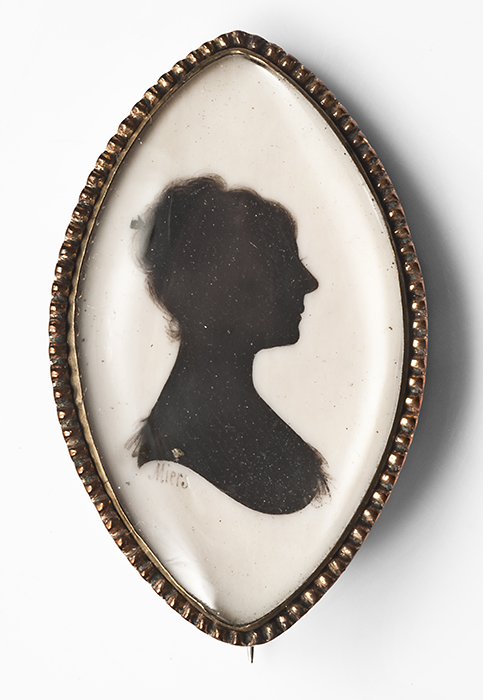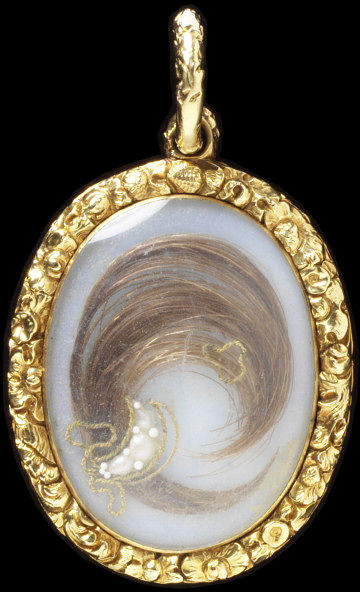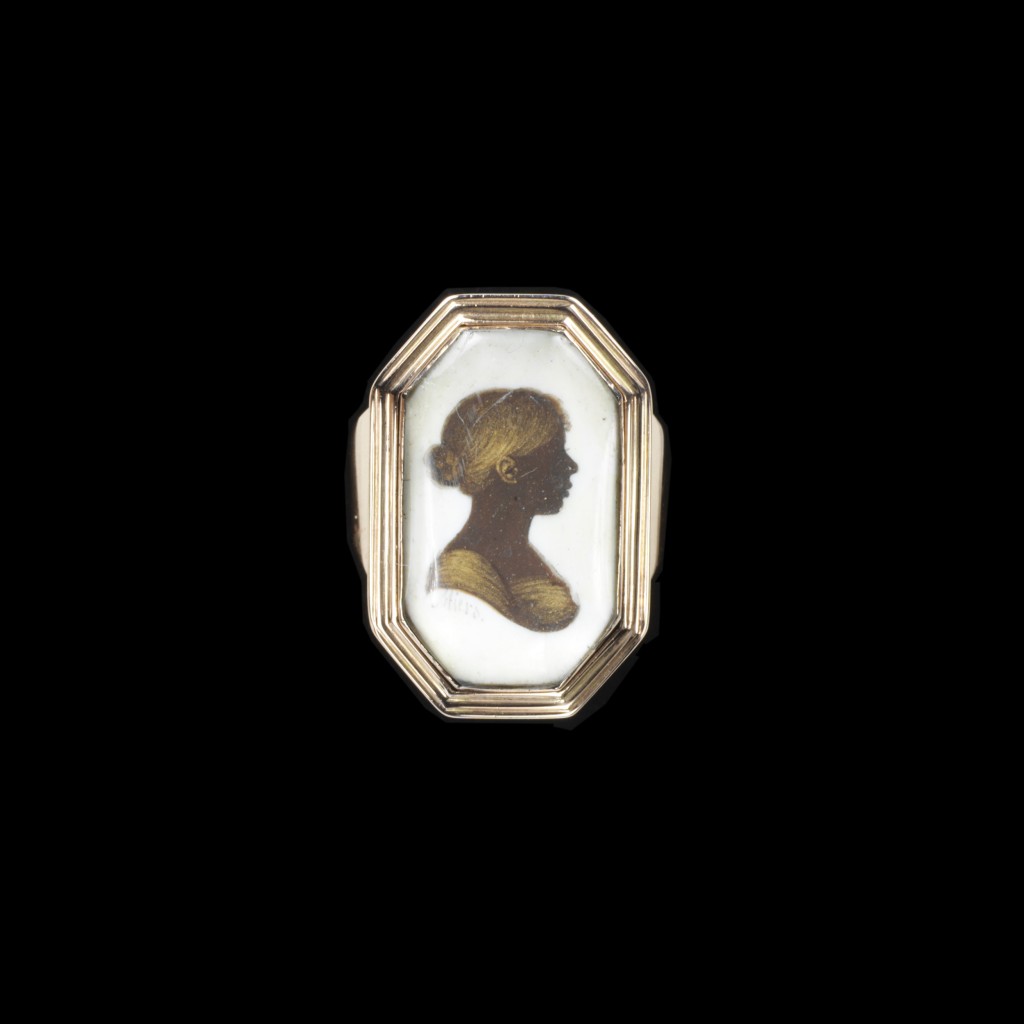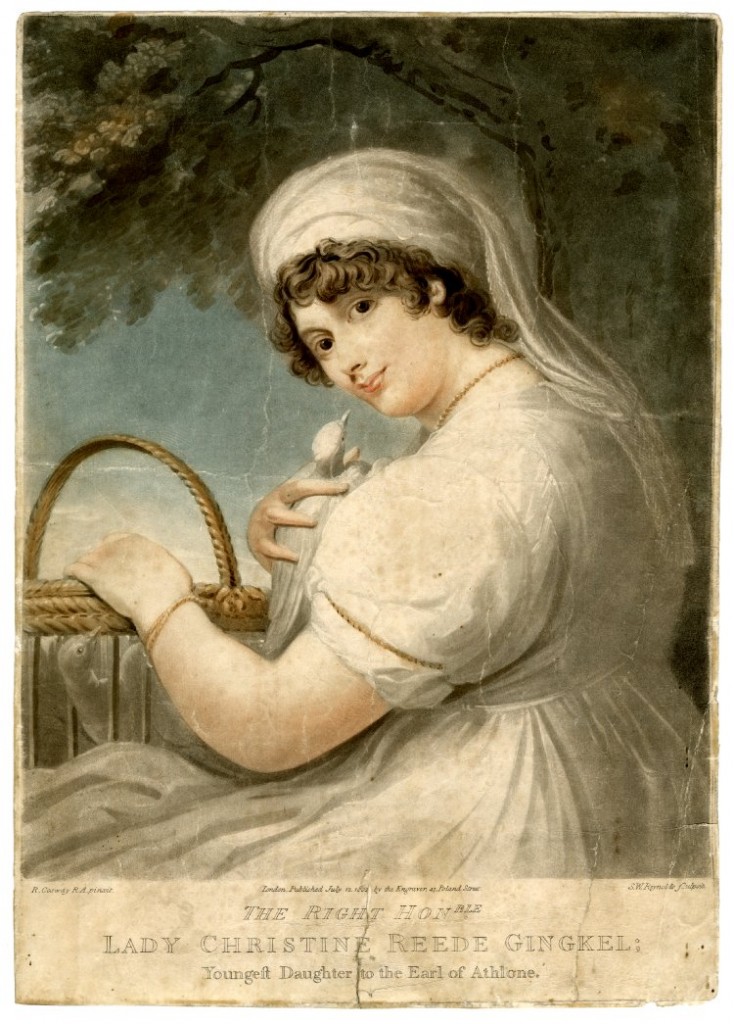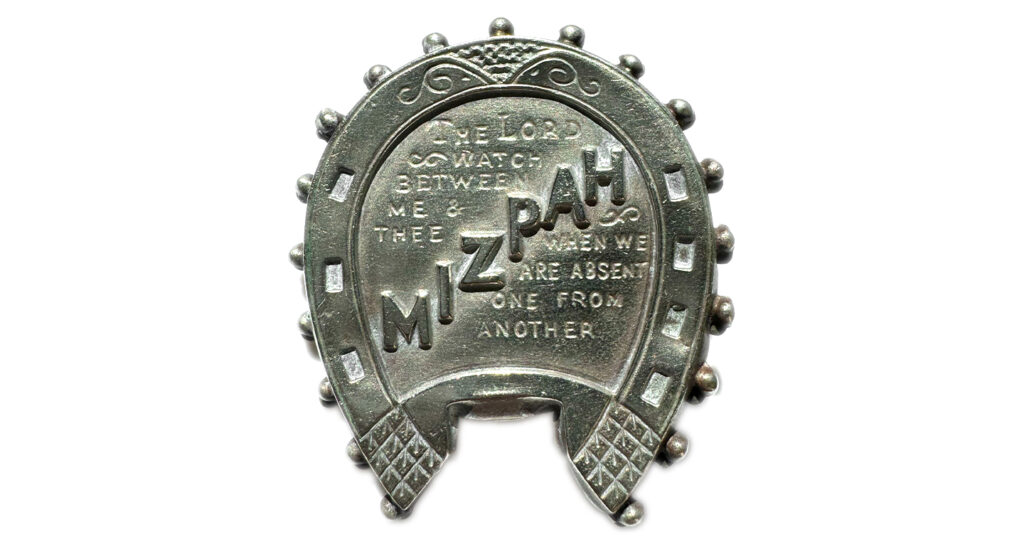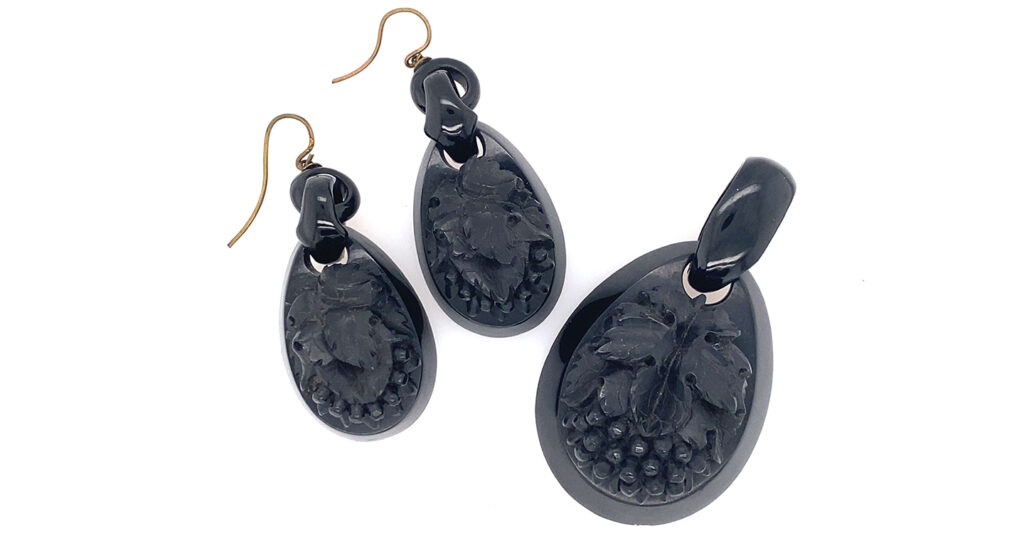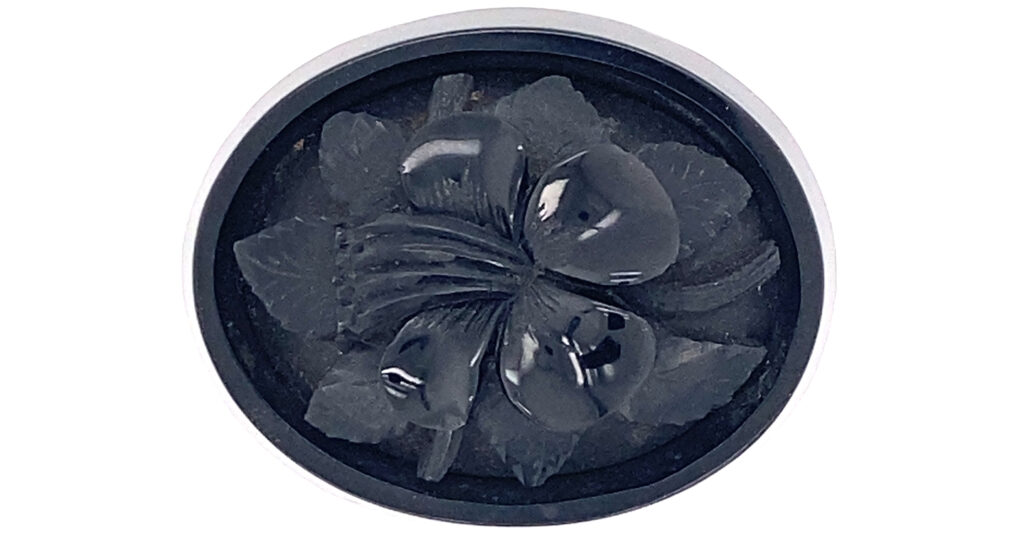Silhouettes & Shades From Miers & Field
Capturing the image of a loved one affordably and quickly is a relatively modern invention. Having the technology to produce a photograph dates from the 1840s, with any previous image being at the cost and skill of an artist. Projecting a profile of a shadow from a candle onto paper, then reducing it with a pantograph (a mechanically linked device that is anchored on one side, with a pen or pencil in the centre and another on the far side which produces are larger or smaller duplicate), the silhouette was cut out, painted and framed. This was cost effective and simple to produce, with amateur and professional artists creating a variety of shades with varying quality.
Known as ‘black shades’, silhouette artistry was popularised in the late 17th century. Freehand scissor cutting was the popular predecessor to black profile painting, with sketched outlines taken of a subject after a few seconds of studying a sitter. After a pencil or pen sketch, a small likeness was cut. Elizabeth Pyburg is one of the earliest recordings of English artistic cutters, cutting a profile of William and Mary dated 1699. Not one particular style is known to popularise or create a conventional standard for silhouettes, with all methods from glass, ivory, plaster, Indian ink, oil painting and smoke-staining used in overlapping times. This was the inclination of the artist or whatever methodology was popular and would create the greatest revenue for its time. Miniature shades found in jewels were incredibly popular from the 1780s to the 1820s, following the trend of the Neoclassical period to capture the ‘self’ in sentimental jewels and keepsakes. This carried over the idealism of the Enlightenment and the challenge to allegorical depictions of identity through ecclesiastical symbols. It also was part of the accessibility that a mobile society had access to artists who could produce these jewels at a reasonable cost.
Popular for souvenirs as their construction was fast and cost effective, artists would establish themselves in tourist places such as Brighton or Bath or public events, creating keepsakes of entire families at a rapid pace. This was from a variety of skills, being either rapid cutting of paper, quickly tracing or freehanded interpretation.
It is said that the name ‘silhouette’ was taken from Étienne de Silhouette, an amateur artist who was also the French Controller-General of Finances under Louis XV. As a method of ridicule, the name was used to parody his management of finances after the Seven Years’ War, reduced spending and taxes. Hence, the method of cut paper shades being ‘cheap’ were called ‘silhouettes’, but the term was not commonly used until the early 19th century.
In the subject of today’s article, the piece carries the signature of John Miers (1756-1821), one of the most prolific and notorious profile painters in Britain. Miers worked at Leeds and in the Strand, opposite Exeter Change, in partnership with John Field, in which pieces were co-signed ‘Miers and Field’. His work captured the profile of Princess Charlotte and George III, leaving an estate after his death at an estimated £20,000.
In the oval/navette style of rings, pins and brooches of the Neoclassical period, ranging from around 2 to 3 inches in size, Miers did prolific work, as can be seen beneath the profile of the lady in this piece. Her image is perfectly personified, with delicate attention paid to the shadow of the hair and lace to the dress. Note even the shadow of the eyelash in the lady’s left eye and how perfectly it is captured. There’s no mistaking the flawless execution of the art in this brooch, or the identity of the lady whom it is capturing.
In advertising their craft, Miers and Field announced they:
“Execute their long approved Profile Likenesses in a superior style of elegance and with that unequalled degree of accuracy as to retain the most animated resemblance and character, given in the minute sizes of Rings, Brooches, Lockets, etc. (Time of Sitting not exceeding five minutes.) Messrs. Miers & Field preserve all the original shades by which they can at any period furnish copies without the necessity of sitting again.” – The History of Silhouettes
To be prolific in a discipline means to be able to execute high quality work at a rapid pace. Miers’ speed and guarantee of being able to capture a likeness without further sittings shows the skill and quality of his ability, a skill that he could impart to his protégés. The was a discipline that was scalable as well, being something an amateur could do at home, rather than fine art which would be taught in a school. It is to the credit of Miers and Field that they could establish themselves in a successful business at a time when competition was emerging through jewellers to provide a hungry audience with quality jewels.
When looking at the above example, painted by Miers, the quality and detail are strikingly similar to the subject of this article. There is no embellishment to define the profile of the face in a standardised or romantic way. The nose is bent and the chin shows signs of age, which is reflected in the wispy lines around the hairline (presumably the beginning of a wig). This piece has its origins at the turn of the 19th century and would be an ideal keepsake for a loved one to remember the gentleman by. Of note is how Miers frames his subjects, with the curvature to the back dipping down to the front creating an elegant line for him to sign his work.
The Neoclassical period was spurred on by the Roman archaeological discoveries at Herculaneum and Pompeii during the 1760s, which led to the fashion of profiles (‘shades’) being fashionable by the 1770s, as depictions of the ‘self’ in miniatures and symbolism became popular, particularly wearing classical fashion. Johann Kaspar Lavater’s Essays on Physiognomy, published in 1775, was illustrated with basic black profiles and was immensely popular. Physiognomy itself was a science that combined aesthetics, psychology and theology to trace itself back to the classical era through the individual’s external appearance. With such importance placed upon how one looked within society and how that reflected back to the moral worth, the impact upon fashion changing to classical style was exponential.
Shades, being used as an illustration in the Essays on Physiognomy, only helped to bolster the business of Miers and Field. In the portrait of William Bray, seen above, Miers paints the silhouette on plaster, which was unsuitable for ink or oil.
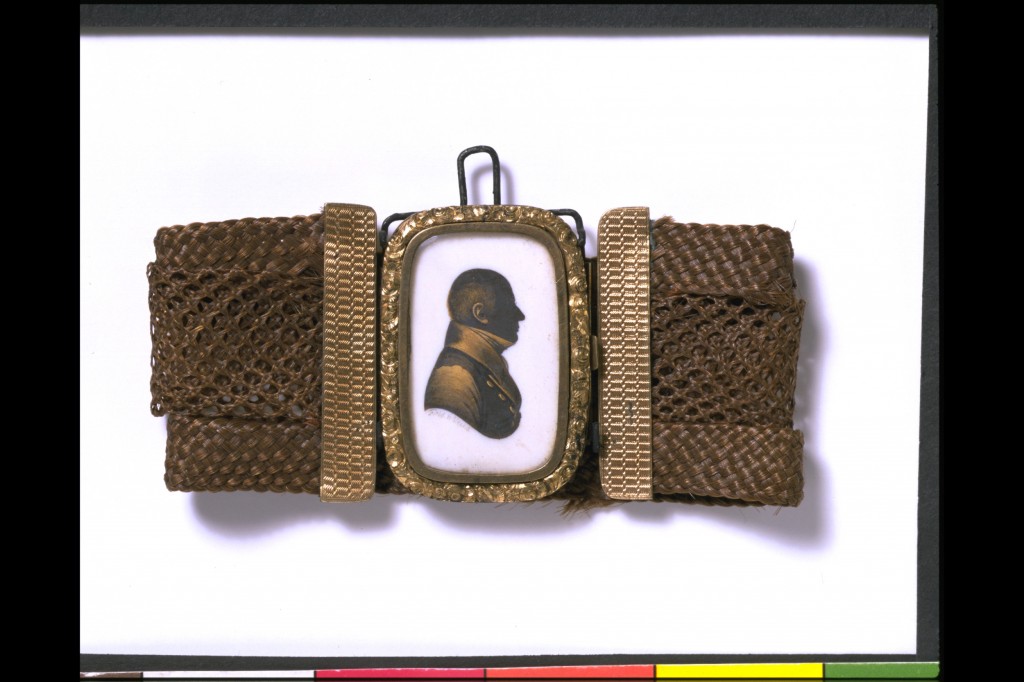
Watercolour on ivory is one of the most popular methods of shade execution for the memorial and sentimental jewellery collector to find. As a contrast to Miers’ work, this bracelet c.1820 is by John Field (signed “Field II Strand”) and shows their signature executional style in the drop from the back of the subject to the dip in the front. Field balances his signature with the same studio style as Miers, but what is most interesting is that this is not the typical shade, it is ‘bronzed’. There is detail in the gentleman’s costume, showing fine detail to the shading of the collar, lapels, cravat, buttons and shoulder seam. The ear is also prominent as an identifier for the man, with the side hair and eyelash shown. However, the face is obscured in the normal shade style, being a simple profile. For its date, the embellished floral and acanthus design is high fashion for the emerging Gothic Revival style that was emerging into society. Even more sentimental than the shade itself is the double-woven hair in the bracelet, connecting this piece to a family member.
In order to appreciate the quality of Miers and Field, as well as to show just how popular the shade profile was, it is important to look at contemporary pieces. In this above ring, the large painted profile is reverse-facing, compared to the left to right style of Miers and Field. It is a swivel ring of nearly three centimetres from north to south, so it would take up a large area of the finger when worn.
On the reverse, the ring swivels to reveal an ivory disc with the name ‘Eleanor’ and a tied cut of hair from the subject. There are two things to consider with this ring. The quality of the art is not of the level seen in other pieces from this time, however, its sentimentality is just as important. Speed to delivery of sentimental jewels capture a moment in time and show a keepsake of love through it. Eleanor was hastily drawn, with the hair quickly cut and the name written on the reverse, without the fine quality and detail that a professional profile artist would have infused within in. While not being as fine from an artistic point of view, its sentimental value is immeasurable. Shades, with their varying degrees of quality, could quickly be created and given, from the home or from a professional, so it is the more personal depictions that lend towards the lack of ceremony surrounding the token – it’s a gift created by the hands from the heart.

Sharing the same floral and acanthus detail to the border as the Field bracelet, this Miers shade c.1810 shows the development of the style from the late 18th century to the 19th century and how shades adapted to fashion. As discussed earlier, the Field bracelet shows more detail of the individual. This contrasts their earlier style of being a stark profile with embellishments to costume and hair, yet these more modern pieces contain far more detail than the typical shade. This is a reaction to the popularity of miniatures during a time when standardised, classical depictions could quickly be tailored in portraits to create keepsakes. In miniatures, this led to the standardised costume, eyes and romantic features, with bespoke hair and tone for gentleman to purchase and give to a loved one, especially those who were going offshore to fight in the Napoleonic wars (1803-1815). For these, it was simple for miniaturists to pre-design uniforms on miniatures and tailor the facial features for the soldiers. How can the profile compete against a style of rapidly produced miniatures? Increasing the definition of the style, by adding details to the costume and hair gives the character depth in a classical way, much like a cameo or intaglio carving. It is a tribute to the work of Miers and Field that a piece such as this was to heavily detailed as to be simply a watercolour painting. This is the quality one would expect from a fine jewel and it captures the gentleman in a way that is no different from a classical bust.
This is called ‘bronzing’, where gold paint is used to show detail to the clothing and the hair. Note that the ear is the only area of flesh that is captured in detail. Miers was a studio beyond the artist, with a protégé signing the work under the name. This standardisation is typical of a school or brand, where the style is perfected enough to be able to have a certain level of detail and identity through its quality and design. Through this, the style could be copied at later dates, with post-mortem shades being designed in updated costume and propagated throughout a family in mourning.
Upon the reverse is a curl of palette worked hair with a tie of gold and seed pearls on opaque glass. These styles of lockets were produced in high numbers (and even made a revival during the early 20th century), so artists could tailor out their interior with a miniature, profile or hair. Growing industry led to faster and higher production levels, taking away the need for one jeweller to complete a jewel from beginning to end.
In another late style from c.1810, Miers highlights the lady’s hair and dress with fine strokes of dark emerging into light. Her skin is set in the dark shade style, but the ear, once again, is shown. There is a subtle beauty to how his art is reflected in this ring. Compared to the Eleanor ring, there is fine detail in his artistry, which speaks to the quality of Miers and also his speed. To be able to capture an individual so finely at a rapid pace is the work of an artist, rather than capture simply a likeness. Beyond the depth of the ear and the lighting of the hair, the work to the face and the smaller chin with pronounced lips is a remarkable identifier of likeness. During the Neoclassical period, there were many outlets of producing art in jewels to represent the ‘self’. While many mourning jewels identify mourning through the use of a mourning lady (or in some cases, the depiction of the literal mourning male), sentimental jewels could use allegorical classical characters in loving situations. This would represent the nature of two people in love, or childbirth or allusions to marriage, but not require the literal person in the scenario. Shades require the smallest of details to represent the individual, otherwise their identity is lost. This is why such fine artistry is required to personify fine jewels.
As discussed, Johann Kaspar Lavater’s Essays on Physiognomy from 1775 helped to define what classical style meant to modern fashion and personifying classical idealism. Popular culture is one of the greatest triggers of modern fashion, with no one moment being the catalyst for change. French fashion has been a modern pillar of style, with the Revolution creating a wide dispersal of fashions and the creation of new ones. In 1804, Napoleon’s Empire was announced and luxury trades were renewed with vigour. Bijoutiers, who worked in ordinary materials and joailliers, who worked in precious stones benefitted from this rise in luxury, with Napoleon requesting the jewels from the former kings of France to be set in the Neoclassical style, essentially connecting him to the Greco-Roman empires. His coronation crown was decorated with cameos and his passions for the antique world led him to establish a school of gem engraving in 1805. If ever there was a height for the Neoclassical period, it was this connection to it. How other societies would reflect this moment is seen in their contention or support of Napoleon. Here is a person who is appropriating the classical world in a time where it had been in mainstream thought and fashion for around forty years. International tension would only lead to the decline of this style, as cultures needed to obtain their own identities in jewellery fashion. A great push to the Gothic Revival style in England has its roots in this.
Simple designs and smaller jewels following in this early 19th century period. The geometric shapes, ovals, circles and rectangles became popular, with the Greek key pattern utilised often in jewels. It was about balance, with many patterns being taken directly from Greco-Roman architecture and detail. During this time, until his remarriage, Josephine was the bastion of style, maintaining the fashion which people would covet.
From this, what we see is that society had to adapt to the shock of the Terror and the new Empire, all the while other cultures are looking to France for its style and reestablishment. Greater and more literal influences of antique cultures led to the allegory of the sentimental depictions becoming literal interpretations of their architecture in jewels, making the individual the monument to classical art itself.
It cannot be understated how important the French influence upon sentimental jewels was in the turn of the 19th century. From the souvenir jewels stating such terms as “Souvenir d’amitié” and “Souvenir d’armour”, the statements of love that were worn on display created a new social proprietary that involved the use of sentimental jewels to offer admired people, within social circles, as signs of courtship and love.
Much of this sentiment stemmed from the French Revolution and its cultural challenge to established monarchy and religious value systems, particularly in the form of Liberté, égalité, fraternité (liberty, equality and fraternity). While the French Restoration of the first-quarter 19th century had repaired the monarchy itself, the challenge to established order had accomplished a lot to put new values in relationships and empower individuals. George IV encouraged society to look externally for artistic influence, since his ascendancy (and Regency, post Regency Act of 1811), George’s investment in the arts was required for the aristocracy to have these tokens of love as social requirements above simple affectations.
The Bourbons were restored in 1814, with jewels being more sedate in their designs due to the lack of wealth. Threaded seed pearl on horse hair created ornate bracelets and necklaces, with materials being smaller and more abundant to exaggerate their use. During the 1820s and 1830s, the use of cannetille (surface covered with wire) or grainti (small granules) embellished the colour of gemstones, as the gold was used in the base of the jewel. As seen with the portrait of Lady Peel by Sir Thomas Lawrence above, the wearing of several bracelets and enamelled rings on one finger elaborately exaggerated the colour of the jewellery. Classical style was starting to become overcome with elements of the Baroque and Rococo, which had only been popular previous to the Neoclassical period.
How this affected the mind of the early 19th century individual was a direct stylistic move away from what had bought about the unrest of the Neoclassical style. With competing styles being mixed for mainstream appeal, the classical style in its literal form would recede until the mid 19th century and the archaeological discoveries that would ignite it once more, such as Etruscan.
It is thanks to the Neoclassical period that shades/silhouettes became popular and led into the simple and natural way of capturing the moment. Without all these different aspects working in tandem to achieve a popular movement, the Neoclassical period could not have transcended society to produce such fine art and jewels. It all stems from identity and challenge to popular thought. Concurrent growth of technologies and the Industrial Revolution only helped propagate the style of the Neoclassical period, with greater accessibility and lower cost reaching through more layers of society. It is thanks to this that Miers and Field could exist to establish and create such fine moments in time.




